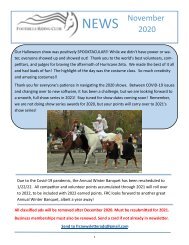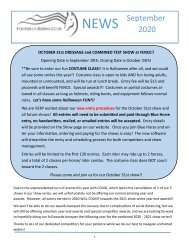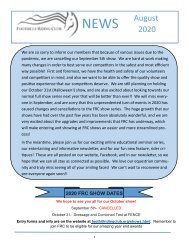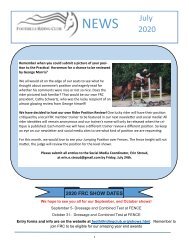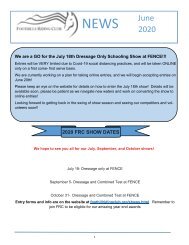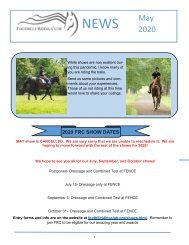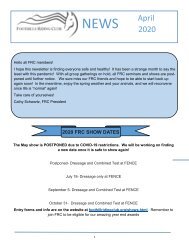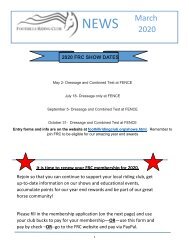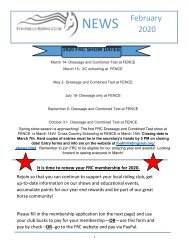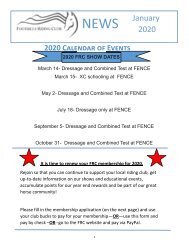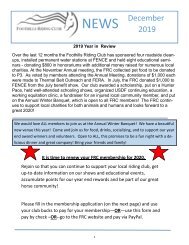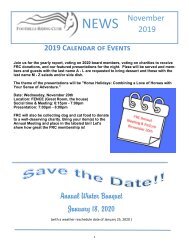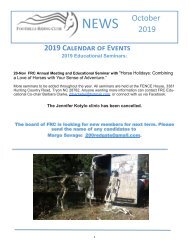November 2018 FRC Member Newsletter
- No tags were found...
You also want an ePaper? Increase the reach of your titles
YUMPU automatically turns print PDFs into web optimized ePapers that Google loves.
October <strong>FRC</strong> Education Seminar<br />
Chiropractic Seminar with Dr Aaron Langley.<br />
Dr Langley started with a discussion on what equine chiropractic was and what it could,<br />
and could not, do. He defined it as complementary healthcare - not intended to replace regular<br />
routine veterinary care (such as vaccinations, emergency care or surgery) but as a<br />
complement to - an addition to - your veterinarian’s care of your horse.<br />
Chiropractic is a Health Care System based on Functional Neurology. And when he<br />
treats his equine patients his examination and treatment will be based on a neurological<br />
examination, where he evaluates the horse’s locomotive movement and physical and<br />
neurological symmetry. Chiropractic eval will diagnose Vertebral Subluxation Complex (VSC),<br />
as well as dysfunctional joints of the spine and extremities only.<br />
New Patients: Dr Langley will ask about their performance history, watch them walk and<br />
trot, observe their posture, palpate/touch their coat and check temperature, palpate their<br />
muscles and look for atrophy and feel for muscle spasms.<br />
What Dr Langley is looking for is a VSC aka an abnormality in the processes of the<br />
vertebra referred to as a VSC – which stands for vertebral subluxation complex. The vertebra<br />
can be affected by Structural, chemical, mental influences (input) which then affect the<br />
muscular and autonomic reactions (output). He used the term “garbage in, garbage out.” The<br />
causes of a VSC are many, such as trauma, (repetitive “micro trauma” even as early as birth),<br />
age, conformation, shoeing, improper trailering/shipping, rider ability and performance<br />
Injuries.<br />
Pain Symptoms of a VSC: discomfort when saddling or riding, abnormal posture when<br />
standing, tossing head or hollowing back, wringing tail, pinning ears or bucking, refusal or<br />
resistance when ridden and other unusual behavior patterns.<br />
Neurologic Symptoms of a VSC: lack of coordination when moving, a mystery lameness<br />
that shifts from one leg to another, unknown stiffness in lateral movement of neck/body,<br />
muscle weakness/atrophy, asymmetrical movement.<br />
“Direct Neurological” Symptoms of a VSC: asymmetrical sweating or non-sweating,<br />
sensitivity to hot or cold, unusual tail rubbing or biting at skin.<br />
Treatment and Diagnosis: A trained Animal Chiropractor should make the final diagnosis<br />
of the VSC and further treatment by a competent doctor involves the application, by hand, of<br />
an adjustment - which was described as a very specific, high velocity, low amplitude, thrust.





